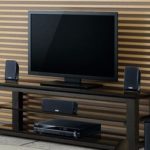Features self-assembled home theater
If you have the idea to make a home theater with your own hands, then it is quite real. Select devices:
- what to look at;
- what to listen through;
- signal source.
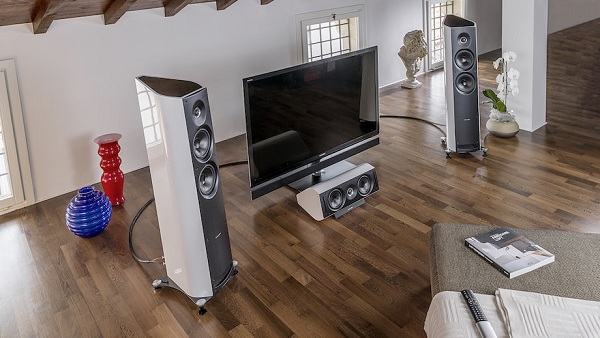
Content
What to watch
This question can be answered in two ways, depending on your needs:
- use a projector for viewing;
- use tv.
Choose between a projector and a TV based on your needs.
Projector
Use for home theater (DC) projector preferably, if you are a movie lover and want to create a cinema atmosphere at home, watch movies on a huge screen compared to panels.
The following advantages of projectors can be highlighted:
- can be hung from the ceiling, has a small size, almost not noticeable in the interior of the room;
- image size is limited by the size of the room or used a special screen;
- very high quality image;
- due to the reflected light decreases the load on the organs of vision.
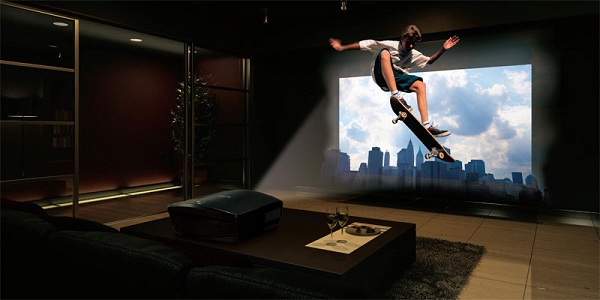
There are disadvantages of this equipment.
- When you enter the room to view the slightest light, the contrast and color rendition of the picture drops sharply. In the cinema you need to hang black thick curtains.
- When watching TV, it is difficult to achieve high definition pictures due to the poor quality of the broadcast of some TV channels.
- Requires a separate audio system for audio output.
- DLP-projectors have a limited lamp life: in 2–3 thousand hours they will have to be replaced. Therefore, it is preferable to devices with LED lamps, whose life is 50 thousand hours.
- The appearance of a rainbow on a light background in DLP models (in devices using LCoS technology, such artifacts are absent). Read more about this popular technology in the article about DLP and LCD projectors.
- Smaller, in comparison with the TV brightness and contrast, reduction of the viewing angle in models of 3LCD-projectors (LED).
Television
Use televisionTo make a home theater with their own hands, most enthusiasts prefer.Modern TVs with LCD, OLED and plasma screens, color depth, contrast and brightness exceed the projection equipment.
Advantages of TVs:
- very high quality, bright, contrasting picture with high color reproduction;
- lit rooms have almost no effect on image quality;
- If you are satisfied with the built-in sound, you do not need to separately buy an amplifier with an audio system;
- all modern TVs have an interface for connecting peripheral devices;
- simple installation and setup.

Disadvantages:
- high price especially TV with large diagonals;
- due to the directional light from the screen is a big strain on the eyes;
- a large, black square screen fits poorly into the interior;
- limited viewing angles;
- Creating a unique cinema atmosphere is problematic due to the size of the screen.
For watching movies on satellite TV or recordings from Blu-ray media, a projector is a better option. And in terms of price-diagonal, projection equipment undoubtedly wins.
If you plan to watch on-air television (news, documentaries, sports), then it will be better to install a TV.
What to listen
AV receiver
This is one of the main components of the DC, it can be called the brain of the system that converts video and audio signals. It serves as an amplifier and switch with a variety of I / O for connecting a large number of devices, ranging from multimedia, to a Blu-ray player and game consoles.
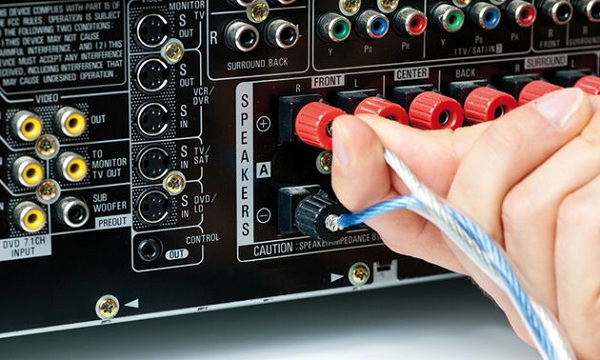
When choosing a receiver you need to pay attention to:
- Device power. Often, manufacturers write in the characteristics - power amplifier 1000 watts per channel. In fact, this indicator corresponds to the connected only one column. If there are more speakers, then the power will be less.
- Switching capabilities. Decide what you will connect to it, whether you need to use Wi-Fi or Bluetooth.
- Digital to Analog Converter (DAC) - responsible for sound quality.
- A parameter that is not taken into account by many is current strength the amplifier. If it is insufficient, the low frequencies will be reproduced with attenuation.
Acoustics system
The standard set of system 5.1 consists of:
- central column;
- floor front speakers - 2 pcs .;
- rear shelving - 2 pcs .;
- subwoofer, necessarily active (with built-in amplifier) - 1 pc.
In order to play the DolbyAtmos signal, you need special speakers, such as the Onkyo SKH-410, or ceiling acoustics the hall.
Signal source
The signal source can serve as HTPC (Home Theater Personal Computer). This device is a personal computer with built-in functions. Smart tv. HTPC have the following properties:
- power to play games and HD video;
- compact size;
- fairly quiet work;
- PC capabilities.
There are two types of HTPC:
- based on nettop;
- based on barebone.
Nettop based
Nettop is a quiet, low-power PC, has a compact size, Wi-Fi module, a Blu-ray drive (DVD). Some models are equipped with a remote control.

For example, as an option, a very compact model will fit - Zotac ZBox Nano AD12 Plus. Although it does not have an optical drive, but a hard disk (320 GB), RAM (DDR3 - 2 GB), Wi-Fi adapter are available. The operating system is not installed.
An alternative is the ASUS EeeBox PC EB1033. It has the above parameters and the presence of a card reader. Win 7 is already installed.
Barebone based
The barebone consists of a case, a power supply unit, a motherboard, and fans for cooling. The remaining components (hard disk, memory, video card) are purchased based on the individual requirements for the HTPC.This option is suitable for advanced computer scientists, well versed in the characteristics and parameters of components. Such experts are able to assemble HTPC with a huge number of opportunities that exceed ready-made solutions.
System "from one box"
This is the easiest way to make a home theater. A set of “out of the box” is a ready-made set of components. The manufacturer has already taken into account all the problems of hardware compatibility.
The advantage of “one box” systems is that they have affordable prices, they require a minimum of knowledge and skills to connect and DK settings. Reproduced as Blu-ray discsand multimedia files from external devices. The system can be connected to a computer network. She is available processing high resolution audio, for example - DTS-HD Master Audio.
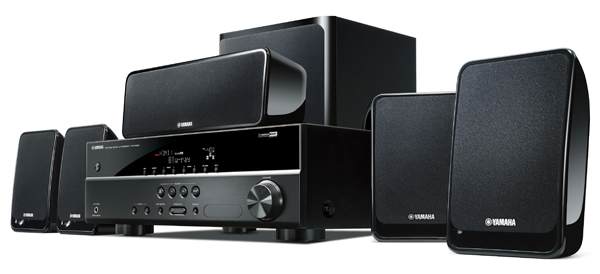
There are models with HDMI ports v.1.4, which are implemented 3D support. Such models save users from heaps of cables, thanks to wireless data exchange between the components.
The lack of ready-made kits from the “box” is the lightweight design of the speakers and subwoofer. The sound they give out is significantly different from the sound from speakers purchased separately. These are usually more expensive models.
But the main thing in the home cinema is video quality. And even if the sound does not meet some standards, few people will notice. You can not say about the quality of the picture on the screen.
It can be summed up: self-assembly home theater components only needed by professionals who understand high-quality acoustics. Ready-made solutions, such as an out-of-the-box package, are suitable for most consumers who need simplicity in connecting, configuring, and using.

/rating_off.png)






